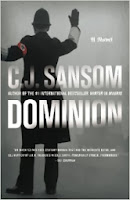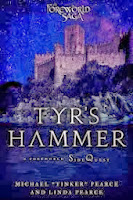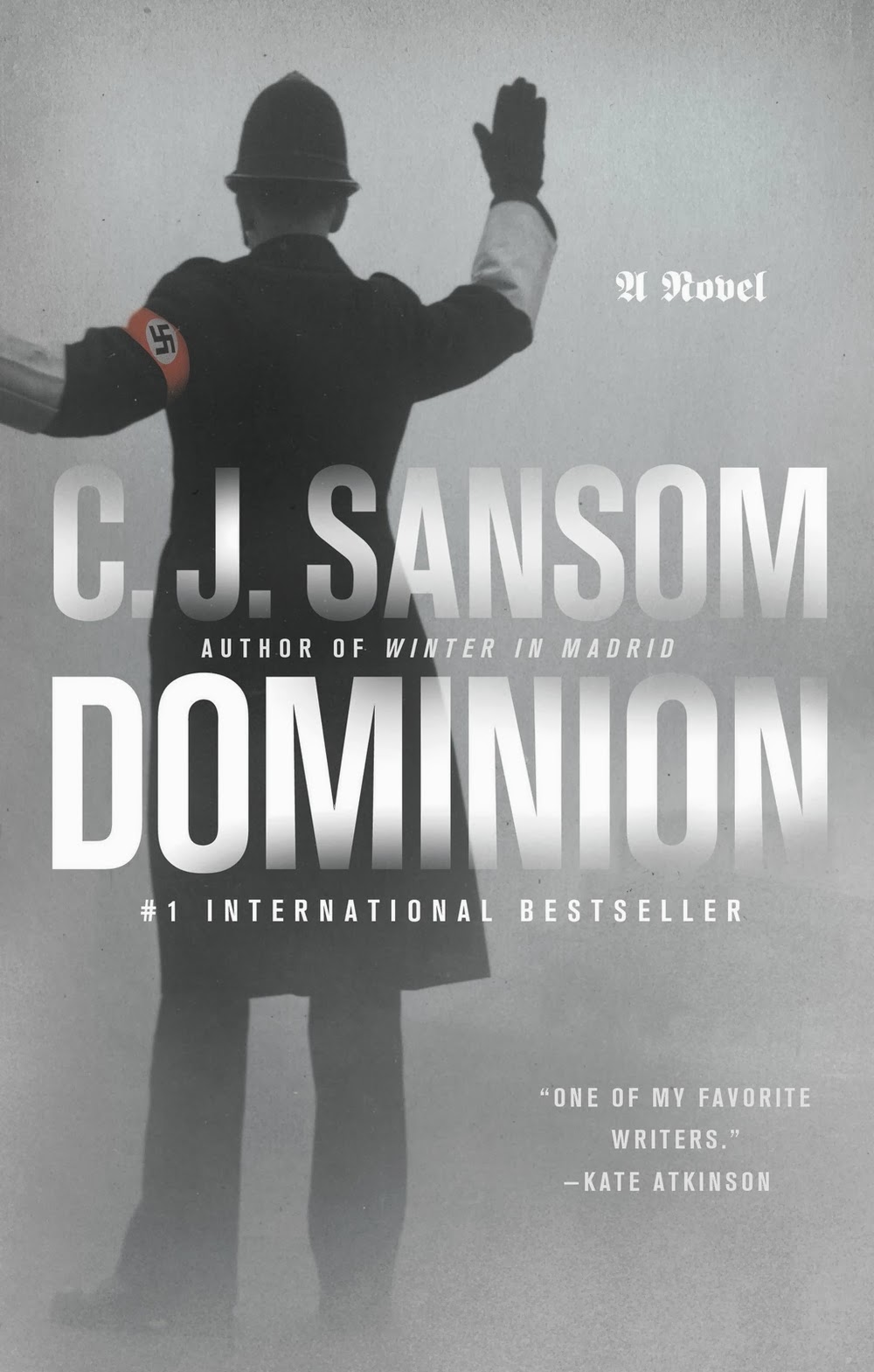Guest post by Mark J. Appleton.
The dawn of the atomic age in 1945 inspired myriad proposals for ways to apply this terrifying new force. Some of these – power plants, ships, and submarines – were actually built. Many more were not.
As a connoisseur of atompunk – retrofuturism based on the 50s and 60s, standing to Robert Heinlein and rocketships as steampunk is to Jules Verne and zeppelins – I have collected some of the more entertaining possibilities thrown up in those heady early years. I've decided to limit my selection to American proposals for the moment, but similar projects were launched in other countries as well. These were not merely the musings of fanciful journalists, but serious proposals put forth by scientists and engineers that, with a change in circumstances, might perhaps have been built.
The Aircraft Nuclear Propulsion ProgramWhat: ANP aimed to build a plane with jet engines powered by heat from a nuclear reactor instead of burning oil. The massive radiation shielding needed meant the A-plane would be expensive, slow, and huge – more than twice the size of the B-52 – but it could potentially stay aloft for weeks. A nuclear-powered airplane could orbit over the oceans continuously, beyond the reach of Soviet attacks, and then approach and strike its targets from any direction.
When: 1945 to 1961, with some research continuing into the early 70s.
How Far: Convair installed a low-power nuclear reactor in a
B-36 and flew it 47 times – followed by a plane carrying paratroopers. If the NB-36 crashed, their job was to jump down and secure the wreckage – the 2 MWth reactor was too small to contaminate a large area, but the intense radioactivity would make the crash site extremely dangerous for unprotected onlookers and would-be rescuers.
GE also built and static-tested three nuclear-powered turbojets in Idaho, known as the Heat Transfer Reactor Experiments. HTRE-3 was essentially a prototype of a flyable atomic jet engine.
And Oak Ridge National Laboratory built and briefly operated a prototype molten-salt-fueled reactor for a more advanced indirect-cycle propulsion system, although it wasn't connected to a jet engine.
Why Not: The Air Force kept changing their mind through the 1950s about whether or not they actually wanted a nuclear airplane; the resulting oscillations in the budget seriously delayed development. By the time Kennedy was elected the government had spent $2 billion on the project – more than $15 billion in modern money – and expected to spend a lot more before an A-plane could see combat. Secretary of Defense Robert McNamara decided that the money could be better spent on
intercontinental ballistic missiles.
How It Could Happen: The simplest point of divergence would be more consistent support from the Pentagon; with stable funding, a low-power prototype could fly before 1960, although it would not be suitable for combat. It's harder to find a way to keep A-planes flying, given the obvious safety and environmental problems, but they could perhaps find roles as ballistic missile carriers and airborne command/communications posts.
Further Reading:
Giving Wings to the AtomProject PLUTOWhat: A nuclear-powered cruise missile. Actually, it was more like a nuclear-powered unmanned bomber – powered by a direct-cycle nuclear
ramjet, and without the need for any wussy “radiation shielding”, the Supersonic Low-Altitude Missile (SLAM) could reach Mach 3. Boosted to its operating speed by strap-on solid rockets, the SLAM would penetrate Soviet airspace at treetop height, carrying 12 hydrogen bombs and spraying radioactive fission products behind it.
When: 1957 through 1964.
How Far: Two nuclear ramjets, Tory-IIA and -IIC, were static-tested in Nevada. Tory-IIC reached 513 MWth power for five minutes, cooled by pressurized air supplied by 25 miles of oil well casing.
Why Not: PLUTO, like ANP, found itself outclassed by cheaper, simpler ballistic missiles. An extra problem was that no one could figure out a way to test such a machine without running the risk of the guidance computer going haywire and, say, taking it on a tour of downtown Los Angeles, spraying fallout behind it. One engineer proposed flying it over Nevada tied to a gigantic tether.
How It Could Happen: Stall the development of ballistic missiles long enough and PLUTO might have a chance. PLUTO was as fast as the planned B-70 Valkyrie, could remain on airborne alert for weeks, and could penetrate Soviet airspace via circuitous routes at low altitude. Perhaps if the Nazis had put the money for the V-2 into more V-1's instead, leading to less post-war support for ballistic missiles, ballistic missiles could be delayed long enough for PLUTO to fly.
Further Reading:
The Flying CrowbarProject OrionWhat: A spacecraft propelled by nuclear explosions. The ship would be mounted on top of a giant “pusher plate”; small hydrogen bombs would be ejected out the back, and the ship would ride the shockwave. An ideal spaceship drive has both a high thrust, so that it can push out of the Earth's gravity, and a high fuel efficiency, so that it does not need a massive fuel tank. Existing spaceship drives can only achieve one or the other; Orion is one of the few proposals that could offer both. Project engineers envisioned 10,000-ton spaceships making three-year cruises of the Saturn system or putting thousands of tons of payload into Earth orbit.
When: Although first proposed in 1946, real development work began in 1958 and continued until 1964.
How Far: Several small model-scale demonstrators using conventional explosives were flown; one reached a height of 56 meters.
Why Not: Orion always faced a number of challenges, but the proximate cause of the project's demise was the Partial Test Ban Treaty of 1963, which forbade nuclear explosions that were not contained deep underground.
How It Could Happen: It's not entirely clear even today if Orion would actually work – several serious technical problems remained, such as pusher plate ablation, misfire recovery, and coping with the EMP generated during launch. Leaving those aside, the simplest way to get Orion flying is for the human race to need to launch a lot of payload into space as quickly as possible. Say, if aliens showed up, or we discovered the Earth is going to explode.
Further Reading:
Project OrionThe Pan-Atomic CanalWhat: A new canal excavated through central America with hundreds of hydrogen bombs. The new canal would be wider than the Panama Canal, allowing bigger ships to cross, and located at sea level, so it would not need the Panama Canal's complicated system of locks to carry ships over the mountains.
When: The late 50s through mid 60s.
How Far: Several nuclear cratering tests were conducted at the Nevada Test Site, most famously the 100-kiloton SEDAN test.
Why Not: Like Orion, the project was scuppered by the Partial Test Ban Treaty. Work continued for some time after the PTBT was signed, since the Atomic Energy Commission hoped the Soviets might agree to a revision of the treaty for “peaceful nuclear explosions”, but this was not to be. Besides this, it was rather questionable if the US could find a partner in Central America willing to host several hundred thermonuclear detonations. Panama was certainly not interested – in addition to the obvious issues, a new sea-level canal would mean the thousands of Panamanians employed operating the existing canal lock system would be laid off.
How It Could Happen: Not only do you need a very different public attitude towards radiation, but also a reason for why the Panama canal could not be used. That means somehow detaching Panama from the American orbit and attaching it to someone else's, presumably Russia. A communist-aligned Panama under the Soviet nuclear umbrella, though implausible, would definitely lead to a new canal of some kind.
Project PACERWhat: Electrical power generated from nuclear fusion has been a holy grail for physics since the mid-1950s, but so far we've only been able to produce fusion energy in bombs. So a group of Los Alamos scientists proposed a simple solution to the problem: detonate hydrogen bombs in enormous underground chambers filled with steam, and use the heat produced to drive a turbine. Two 50-kiloton blasts per day would power a 2 GWe generating station, enough to power 1.6 million American homes.
But electricity would really be a side-benefit; PACER's main product would be neutrons from the blast, which would transmute thorium into fissile uranium-233 to power conventional nuclear reactors. The U-233 would produce ten times as much energy as the PACER machine itself.
When: The concept was proposed in 1957 and studied off-and-on by the Plowshare project. PACER itself lasted from 1972 to 1974.
How Far: One nuclear test in 1961, GNOME, had power generation as a secondary purpose, but PACER itself was largely limited to computer modeling and nuclear charge design.
Why Not: PACER would only be cost-competitive if it could produce U-233 fuel more cheaply than conventional uranium fuel could be mined – and an outside review in 1975 concluded the price of uranium would have to rise by a factor of eight before that happened.
How It Could Happen: It probably couldn't happen historically – but it's imaginable it might come into use some time in the far future, if all other resources are depleted and no better alternative is found.
The Manhattan Shelter StudyWhat: A system of underground bomb shelters deep enough to survive (hopefully) a direct hit with a high-yield thermonuclear weapon and the ensuing radioactive fallout. Although the study used Manhattan as a case study, the plan was to build them in every major urban area in the country, with space for 200 million people in total – the system would make
Fallout's Vaults look like broom closets. The Manhattan shelters would have enough supplies for two months of underground living, and be powered by four submarine reactors.
When: 1956 through 1958.
How Far: A preliminary study with some concept art.
Why Not: It would be insanely expensive – the study estimated their proposed national shelter system would cost $1.6 trillion in 2012 dollars, and I have it on expert authority that that is likely an underestimate by a factor of six. Also, one in every ten people in the country would be recruited as quasi-military “civil defense cadres”, and the Eisenhower administration was unwilling to endorse such a permanent militarization of American society.
How It Could Happen: Given the titanic resources demanded for such a project, it will only happen if the US government and populace believe nuclear war is not just possible, but actually imminent. My suggestion would be that continued US neutrality in World War II allows the Nazis to defeat Russia; by 1960 the US has woken up to the threat and is furiously building up for an anticipated nuclear war with a genocidal Third Reich led by an increasingly unstable Hitler.
Further Reading:
Rock to Hide MeThe SubterreneWhat: A tunneling machine that would drill through the Earth by melting the rock in front of it with heat from a nuclear reactor.
When: 1970 through 1976.
How Far: Small-scale versions using electrical heating elements instead of an atomic reactor were built and successfully tested. Patents were filed on the nuclear version, but no serious development work was done.
Why Not: I haven't found any record for the specific reason, but the 1970s were not a good time to be proposing new and exciting uses for the atom. The Atomic Energy Commission was transforming into the Department of Energy and nuclear energy wasn't sexy anymore; there was no appetite in Washington for the effort needed to turn this into a working technology.
How It Could Happen: There's likely no way to rescue the subterrene in the '70s. But a world that saw significantly more use of nuclear energy in general, and a public more tolerant of radiation hazards, could perhaps see the machines be built. And even if it was never used on Earth, there have been several proposals to use it in space, such as on a probe to melt through the Europan ice cap to the ocean underneath.
Further Reading:
The Atomic SubterreneThermal Radiation Attenuating Clouds (TRAC)What: Massive smoke generators would cover cities with dense banks of smog. The smoke would absorb the pulse of heat from an atomic bomb detonation, attenuating it and reducing the damage. A bomb would still damage a TRAC-protected city, but to a lesser degree.
When: 1951 through the late 60s.
How Far: Prototype smoke generators were built and tested in two nuclear tests in the 1950s.
Why Not: I have not found a specific reason for TRAC's cancellation, but I suspect it was cancelled because while it did
work, it only reduced (not eliminated) the damage, and only one type of damage – TRAC did nothing to shield against blast or radiation.
How It Could Happen: Like the Manhattan Shelter Study, TRAC is only likely to happen if the United States believes that a nuclear war is imminent, and is desperately trying to do anything it can to minimize the damage.
Chrysler TV-8What: It's a nuclear-powered tank. Yes, really.
When: 1955.
How Far: They made a really cool-looking scale model. The TV-8 was a speculative tank design proposed more as a thought experiment than anything else. The nuclear engine was just one possibility listed among a number of other propulsion options, and most of the work was on the unusual (and bizarre) hull design intended to resist near-misses by tactical nuclear weapons.
Why Not: It was determined the TV-8's unusual design did not actually offer any advantages.
How It Could Happen: It probably couldn't. Even if the TV-8 was somehow built, it wouldn't have a nuclear engine – I'm skeptical a reactor could even be made small enough to move such a vehicle using 1950s technology. It certainly could not be done at a price even the Pentagon would be willing to pay.
Further Reading:
The Chrysler TV-8 Concept TankNuclear Gas and Oil StimulationWhat: Using deeply-buried hydrogen bombs to break up rock to release natural gas or oil – think of it as nuclear fracking.
When: The late 50s through early 70s.
How Far: Three natural gas stimulation shots were conducted (GASBUGGY, RULISON, and RIO BLANCO), as well as several tests at the Nevada Test Site to develop nuclear explosives that would produce less radioactive contamination in the gas.
Why Not: Three reasons: because of worry about nuclear proliferation, because the biggest experimental test failed to actually produce much gas due to mistakes in site selection, and because by the early 70s people no longer thought that a little radiation in the morning put hair on your chest.
How It Could Happen: The Russians actually did it, setting off 25 oil and gas stimulation shots, so it apparently can be cost-effective (English-language reports disagree about whether the gas produced was radioactive). However, widespread use of nuclear stimulation goes against the strong anti-proliferation inclinations of the US government since the 60s, and as long as simpler, less nukey options are available it's very unlikely the technology would be deployed even if radiation was not a concern. Perhaps if the US became extremely desperate for oil it might be deployed.
* * *
Mark J. Appleton blogs on atompunk history at Atomic Skies.


.jpg)





























.jpg)













